Hurricane Roof Damage in Florida: What You Need to Know
Florida homeowners are no strangers to the devastating effects of hurricanes, as recently demonstrated by Hurricanes Helene and Milton. As a roofing expert, I’ve seen firsthand how these powerful storms can wreak havoc on residential and commercial roofs. In this post, we’ll explore the types of damage hurricanes can cause, focusing on shingle roofs, and discuss essential steps for documentation and mitigation.
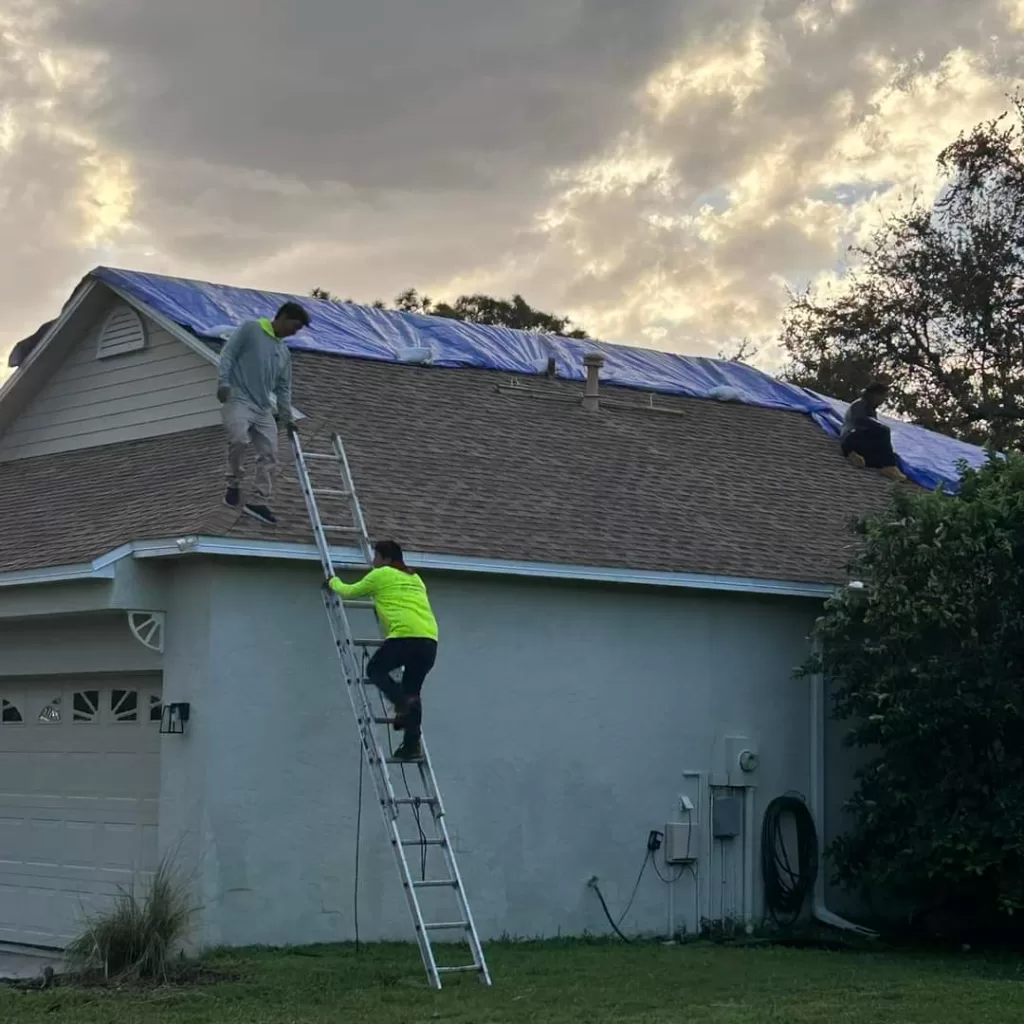
The Impact of Hurricane Winds on Shingles
Older Shingles: Prone to Tearing
Older shingles, particularly those nearing the end of their lifespan, are more susceptible to hurricane damage. These shingles tend to become brittle over time, losing their flexibility. When faced with hurricane-force winds, they’re more likely to tear rather than bend. This tearing can lead to extensive roof damage and potential water infiltration.
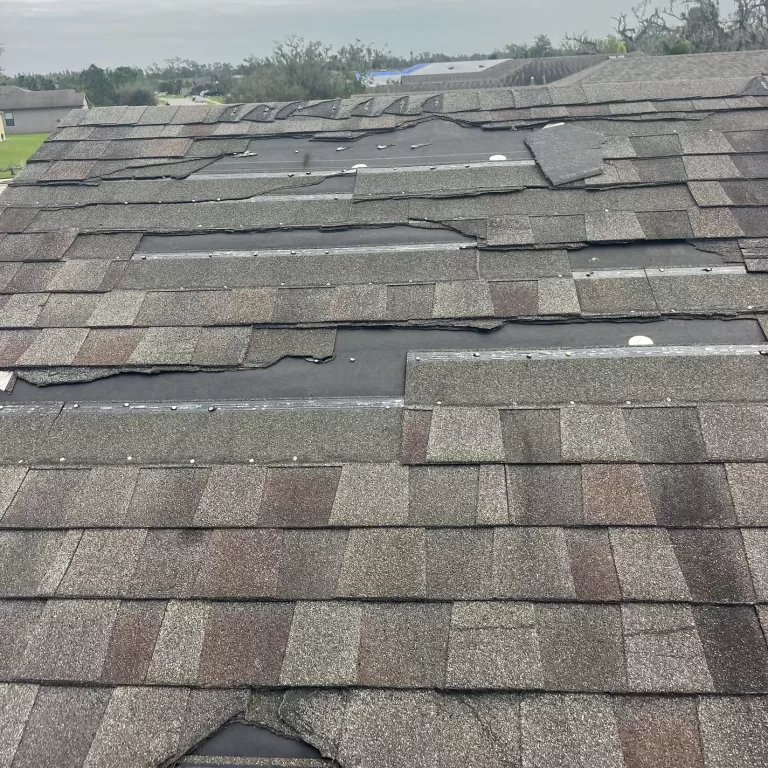
Newer Shingles: Not Immune to Damage
While newer shingles are generally more resilient, they’re not invincible against extreme winds. Even recently installed shingles can lift and be pulled off during a hurricane. The intense, sustained winds characteristic of storms like Hurricane Milton can create powerful uplift forces, causing shingles to detach from the roof deck.
However, Strategic Roofing employs several advanced techniques to enhance shingle durability:
- Enhanced Decking Attachment: We use 8D ring shank nails to secure the decking to the trusses across the entire roof, providing a stronger foundation.
- SureNail® Technology: Owens Corning shingles feature a reinforced fiberglass strip in the nailing area, offering increased durability and wind resistance.
- Tru-Bond® Sealant: This proprietary adhesive strip further seals the layers of shingles together, preventing lift during high winds.
- Edge and Starter Strip Reinforcement: We apply additional adhesive tar to the edges and starter strips, enhancing waterproofing and ensuring stronger adhesion.
These measures significantly improve a roof’s ability to withstand hurricane-force winds, though it’s important to note that no roofing system is completely impervious to extreme weather conditions.
Hurricane Clips: Securing Your Roof Against Wind Uplift
One of the most critical components in protecting your roof from hurricane damage is the use of hurricane clips. These small but mighty metal connectors play a crucial role in preventing your roof from being lifted off your home during extreme wind events.
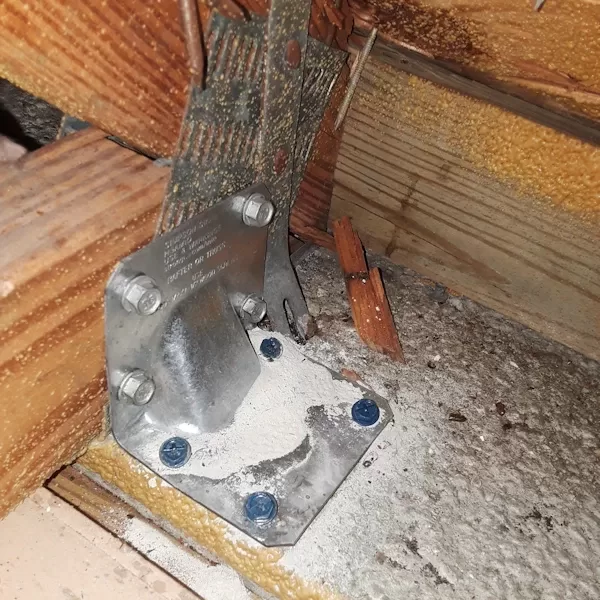
Tile Roof Damage in Hurricanes
Tile roofs, popular in Florida for their durability and aesthetic appeal, can also suffer significant damage during hurricanes. While generally more resistant to wind than shingle roofs, tile roofs are not immune to the extreme conditions brought by storms like Helene and Milton.
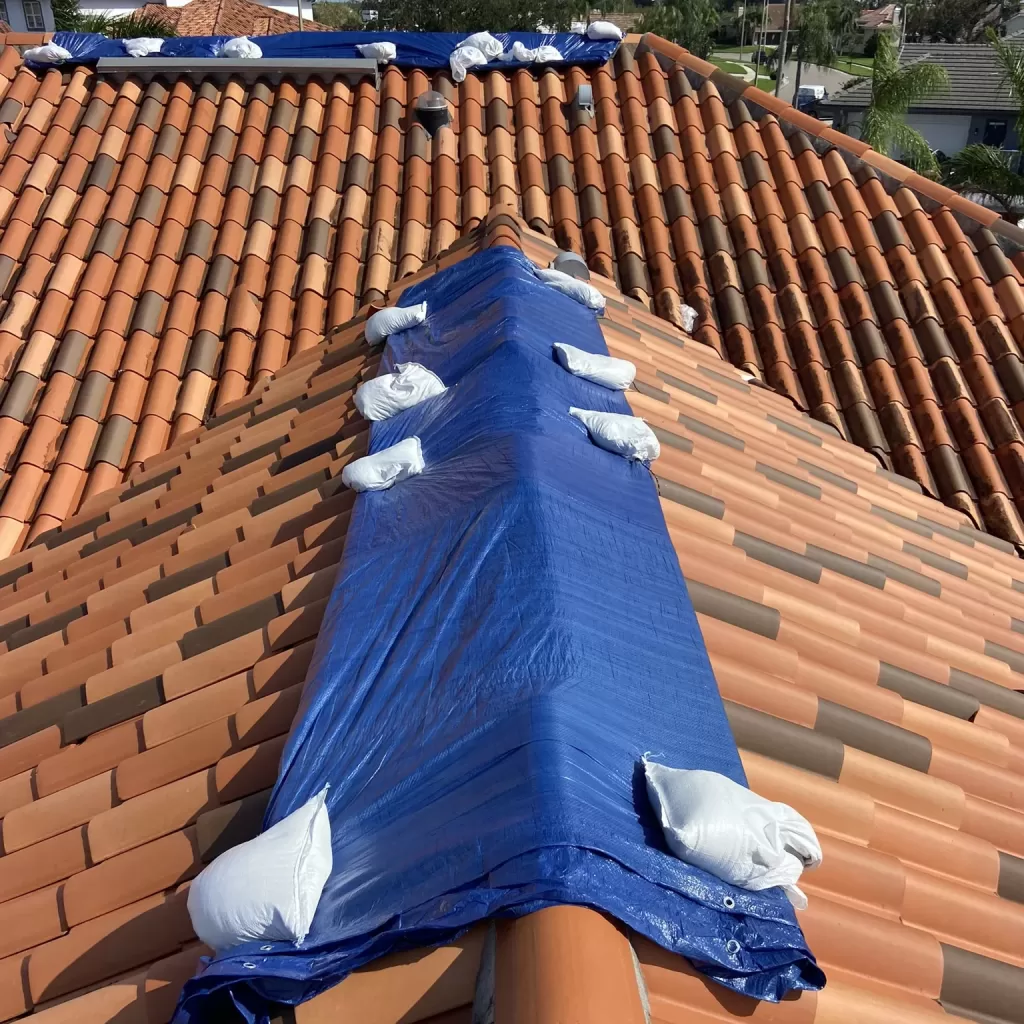
Ridge Tile Vulnerability
One of the most common forms of damage to tile roofs during hurricanes involves the ridge tiles. These tiles, which run along the peak of the roof, are particularly susceptible to being ripped up by extreme winds. The uplift forces generated by hurricane-strength winds can catch underneath these tiles, lifting and sometimes completely removing them from the roof.
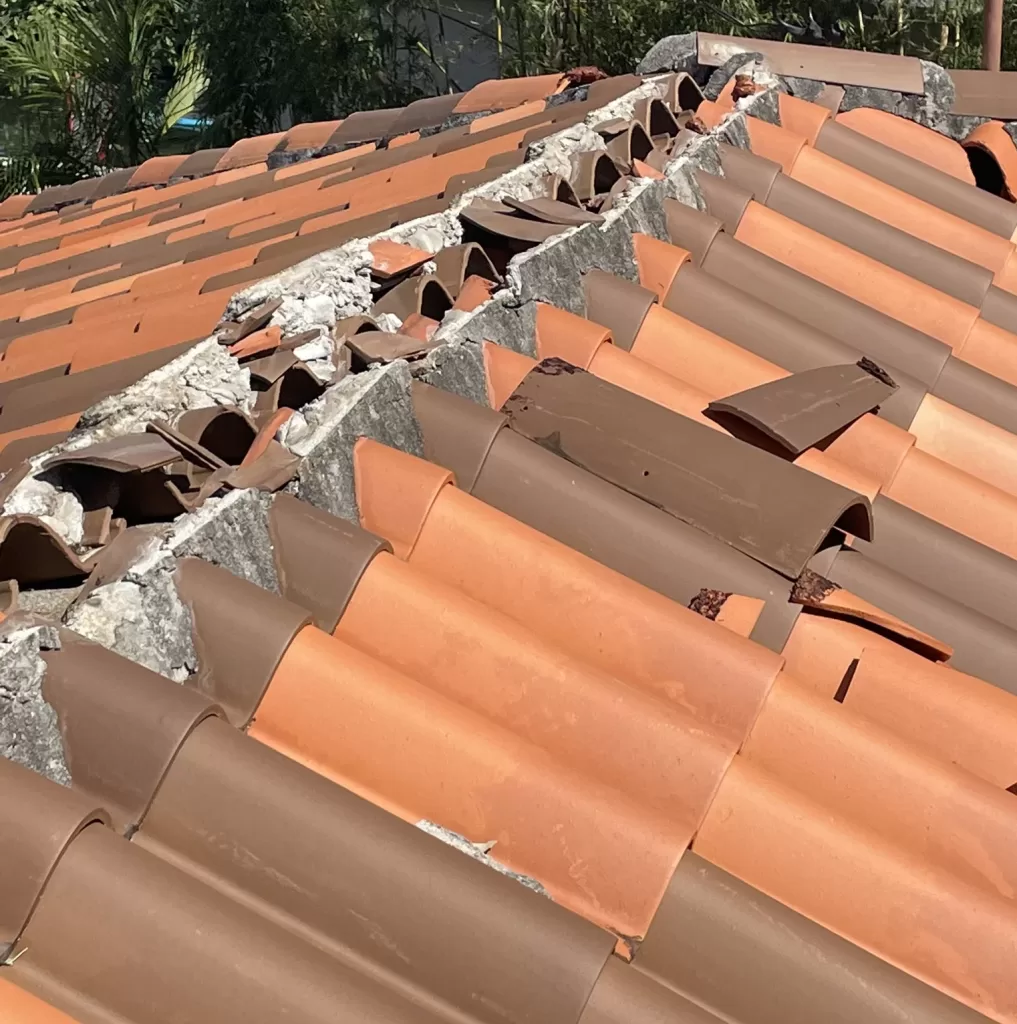
Beyond the Ridge: Other Tile Damage
While ridge tiles are often the first to go, other areas of a tile roof can also sustain damage:
- Broken Tiles: High winds can cause tiles to shift, crack, or break completely, especially if debris is blown onto the roof.
- Lifted Tiles: Strong winds can lift individual tiles, breaking their seal and potentially allowing water intrusion.
- Missing Tiles: In severe cases, entire tiles may be torn from the roof, leaving exposed areas.
Documenting Hurricane Roof Damage
Thorough documentation of roof damage is crucial for insurance claims and proper repairs. After a hurricane like Helene or Milton, it’s essential to:
- Take extensive photos and videos of all visible damage
- Note the date and time of the damage occurrence
- Keep records of any emergency repairs or tarping
- Document any interior damage caused by roof leaks
Remember, Florida law requires prompt notice of property insurance claims after a storm.
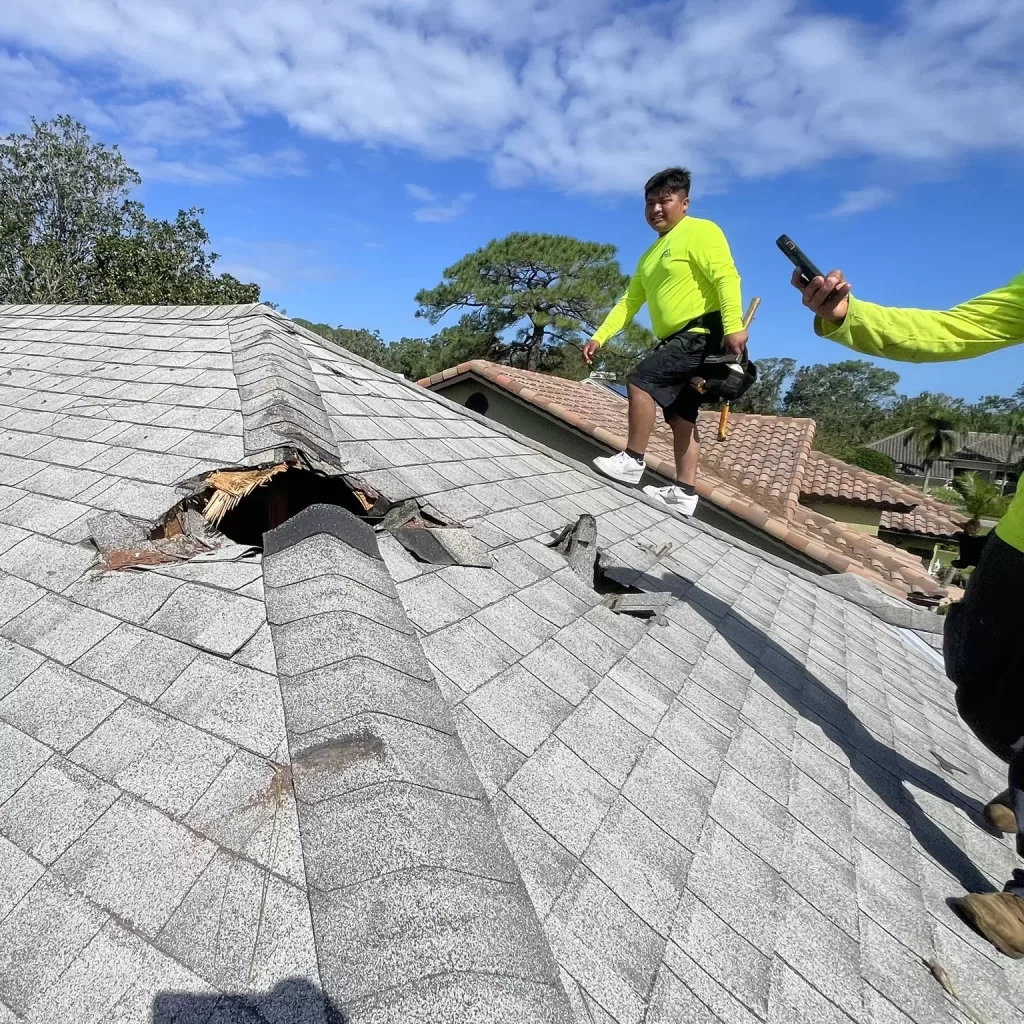
Emergency Tarping: A Critical Step
Placing an emergency tarp on your damaged roof is a vital step in mitigating further damage. This temporary measure helps prevent water infiltration, which can lead to additional structural issues and mold growth. Strategic Roofing has been responding continuously post-storm to document and waterproof roofs affected by recent hurricanes.
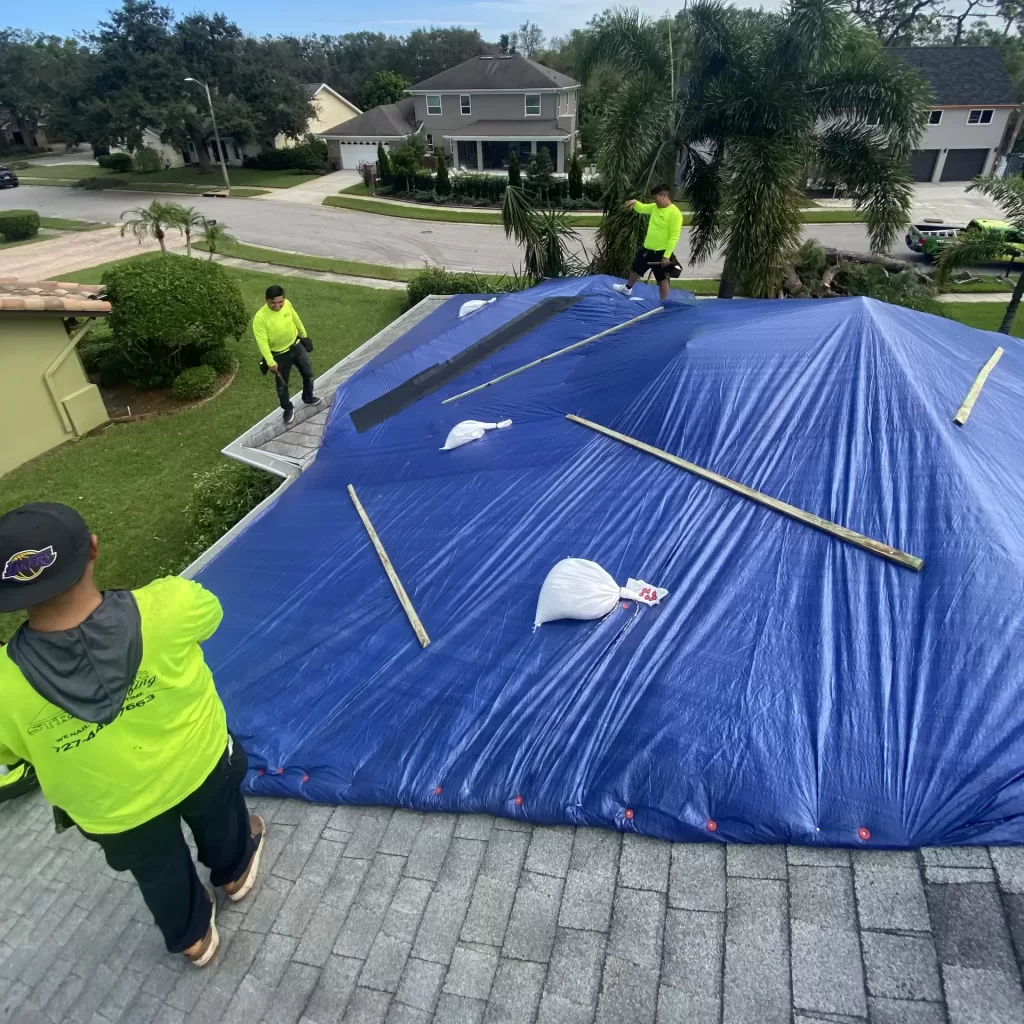
Recent Hurricane Impact in Florida
Hurricane Milton, which made landfall in October 2024, caused significant damage across the state. The storm’s powerful winds, exceeding 100 mph, even ripped apart the fabric roof of Tropicana Field, home of the Tampa Bay Rays. This event underscores the destructive potential of hurricanes and the importance of proper roof maintenance and preparation.
Conclusion
As Florida continues to face the threat of hurricanes like Helene and Milton, understanding roof vulnerability and taking prompt action after storm damage is crucial. By documenting damage thoroughly and implementing emergency mitigation measures, homeowners can protect their property and streamline the repair process. Remember, professional roofing services like Strategic Roofing are available to assist with post-storm inspections, documentation, and repairs.
